Bread & Roses
Return to Normalcy, they cry…
My older sister went to college in the late 80’s. When she came home one summer, she brought me a big bag of secondhand t-shirts. Mixed in with the Motley Crue and Humboldt State logos was one of the softest, prettiest t-shirts I had ever seen. Hand drawn roses bloomed in a wild border around delicate, upraised fists, the words ‘Bread and Roses’ scripted carefully in the middle. This was years before Google, and my 10 year old brain assumed it was a Grateful Dead cover band or something. I wore that shirt until it fell apart, not knowing what it meant.
Currently, Coronavirus is ripping it’s way across the globe. I’m writing from California, where we’ve been in lockdown for 65 days. In that time, the US has reached unemployment rates nearly equal to those of the Great Depression. We have yet to see which businesses will survive these mandatory shutdowns. People have taken to the streets to protest – not against the $750 million bailout that was allocated for small businesses but paid to large corporations. No, they gathered to insist that the lowest paid and least insured of us go back to work and offer them services while they refuse to take precautions to keep us safe.
To these protestors, the length of their hair is more important than the health and well being of the person paid to cut it.
This Tuesday, I will be returning to work along with many of my peers. Coronavirus has not slowed. There is no vaccine – or even really an effective treatment. Most of us going back to work in service jobs have substandard medical insurance, if any at all. The president has referred to this as a war against Coronavirus, with our lowest paid workers serving on the front lines. My own last day of Quarantine will be Memorial Day – a national holiday meant to honor those lost in war.
The PPP loan was designed to divert people from collecting Unemployment Insurance benefits that were automatically paid into from last year’s payroll taxes. It’s like rain on your wedding day, a free ride when you’ve already paid.
Isn’t it ironic?
This morning, I opened an article with safety tips for workers, a banner arched across the top of the page emblazoned with a familiar slogan – ‘Bread and Roses’. I finally got the reminder to google that old favorite t-shirt. And with that, I fell down a whole new rabbit hole.
The Bread and Roses strike started On January 11, 1912 in Lawrence, Massachusetts, when a law was passed that limited a workday from 56 to 54 hours per week without raising wages to compensate. 200 weaving women came to work to find their schedules cut. They refused to work and stood like statues next to their looms, asking for livable wages. Management sent them away – closing down a thousand looms as a result. A grassroots movement was begun that day, shutting down textile mills across Massachusetts.
At the time, that two hour a week pay cut worked out to about 32 cents a week. For most of these textile workers, this was the equivalent of four loaves of bread – or what it took to keep their children from starving. Most families lived on just bread and molasses – no meats or veg. In comparison, one of the mill owners, William Wood, was a multi-millionaire. He spoke out from one of his four mansions, saying that the legislation was to blame and calling for an early return to work without compromise. The IWW (Industrial Workers of the World) sent representatives to help organize the strike. It’s important to note that the IWW was focused on nonviolent protest and owner/worker negotiations.
The owners of the mills refused to compromise, hiring armies of armed militia to protect the empty factories. Meanwhile, the striking workers, primarily women, sang and danced through their picket lines (to avoid loitering charges) and created grassroots support systems to help the 700 children left without care while their parents advocated for livable wages. The Department of Labor issued a statement saying that ‘few strikes involving so large a number of employees have continued so long with so little violence or riot”. It was referred to as the Singing Strike, with parades of ten to twenty thousand workers marching in the streets, waving flags of their home countries and singing ‘Internationale’ in more than a dozen languages.
This Singing Strike prompted the mayor to bring the militia troops to eight hundred strong, escalating the tension. Dynamite was planted around the city by textile mill owners in an effort to frame the strikers – one mill owner/conspirator was charged $500 for the crime. Striking workers were arrested and beaten. By the third week of the strike, a protestor named Annie LoPizzo was found dead, killed by a bullet caliber most commonly used by police. Later that week, 18 year old John Rami was run through with a soldier’s bayonet.
By the end of the strike in mid March, mill owners had compromised with verbal agreements for a sliding scale of a five to twenty percent wage increase, time and a half for overtime, and no discrimination for strikers. This affected three hundred thousand impoverished workers. Three of the IWW organizers had been framed for the murders of the striking workers – the ones killed by police caliber bullets and soldier’s bayonets. 130 women had been arrested. Thirty four of those arrested women and fifteen of their children were detained at a train station as the striking mothers tried to send their children to safety, with some of the women forced to breastfeed their babies through jailhouse bars.
On October 12, 1912, the mayor of Lawrence held a Columbus Day parade, calling for ‘a return to normalcy’. The IWW was banned from the parade and the motto on the parade’s official banner read ‘For God and Country. The Stars and Stripes forever. The red flag never! A protest against the IWW, it’s principles and methods.’ Mill owners broke their verbal agreements, and almost all of the gains of the two month strike were rolled back as the parade ran through the same streets where the striking workers had sung and marched.
I can’t help but see history repeating itself. While the situations are distinctly different, the parallels are far too strong to ignore. Many states have been locked down for an equivalent amount of time – two months. There have been general strikes at some of the largest essential businesses to advocate for safe working conditions with no results, while the owner of the largest company saw a net worth increase of $24 billion – untaxed. Medical staff have been told to work with poorly equipped PPE, some of whom have been fired for asking for private donations of adequate protective gear on social media. Small business loans have been granted with the stipulation that they will be forgiven if the loans are used on payroll within weeks of distribution – while the virus continues to ravage the populations with the least access to medical care and economic sustainability. Unemployment benefits have been supplemented with the CARES act to bring Unemployment benefit payments above the poverty level – often netting more cash in hand for laid off workers than that of a full work week. Health care continues to be tied to employment, while the unemployment rate soars to the highest numbers since the Great Depression, and a highly transmissible, deadly virus rips through the population.
Defiant middle class Americans have taken to the streets, flouting masking protocols and stay-at-home orders, insisting that the economy (rather, their ability to spend money unimpeded) is more important than the people that fuel it. They claim that the virus that has ravaged the planet is a hoax somehow connected to American voting systems. These groups of people have become epicenters for viral outbreaks, becoming metaphorical caches of dynamite spread throughout our cities. They gather at Waffle Houses and State Capitols, brandishing firearms and screaming at police about oppression, with no repercussions.
Return to Normalcy, they cry.
I work for a small, family run business. I have over 20 years in a career that I truly love. I miss the pleasant routines my team has worked out, miss my recurring clients and the daily logic puzzles that make up my job. My regular hourly rate is on the higher end of the low-income threshold. I am one of the lucky ones whose job has weathered the initial shutdown. In theory, I want to go back to work.
But even with decades of experience, with medical board certification and a loyal family work environment and a true love for the work, I know that I make a thousand dollars a month less than what my state considers a viable wage – before factoring in the cost of now-crucial medical insurance. I know that I am expendable, collateral damage in the war for someone else’s “right” to shop for a pair of designer sunglasses that retail for about half of my weekly gross pay.
Twenty thousand workers took to the streets in January of 1912, advocating for livable wages and safe working conditions. Their anthem was a call for not only wages high enough to feed their families, but the ability to enjoy the sweet subtleties of life – Bread, Yes, and Roses Too.
Over a century later, I prepare to walk into work, knowing that I am lucky to have a job – even if it’s clearly paying 1/3 less than that state mandated livable wage. In 1912, 32 cents equaled four loaves of bread – the discrepancy between unemployment benefits and my work wage in 2020 is equivalent to 62 loaves of artisinal bread, per week.
To top it off, I have to forfeit those sweet subtleties. The news is full of predictions of recurrent waves of virus. Because of the unmasked masses, I will stand behind a counter for 40 hours, and then self-isolate for the remaining 128 hours of my workweek because I do not want to carry the virus back to my loved ones. I live alone. Where will I find those roses?
It is not a consolation that I am one of the lucky ones.
I wish I still had that shirt. If I make it through the second wave at my retail job, I’ll get the sentiment tattooed on myself instead.
The poem rings in my ears as I type this –
Our lives shall not be sweated
From birth until life closes;
Hearts starve as well as bodies;
bread and roses, bread and roses.
(Bread And Roses, James Oppenheim)







